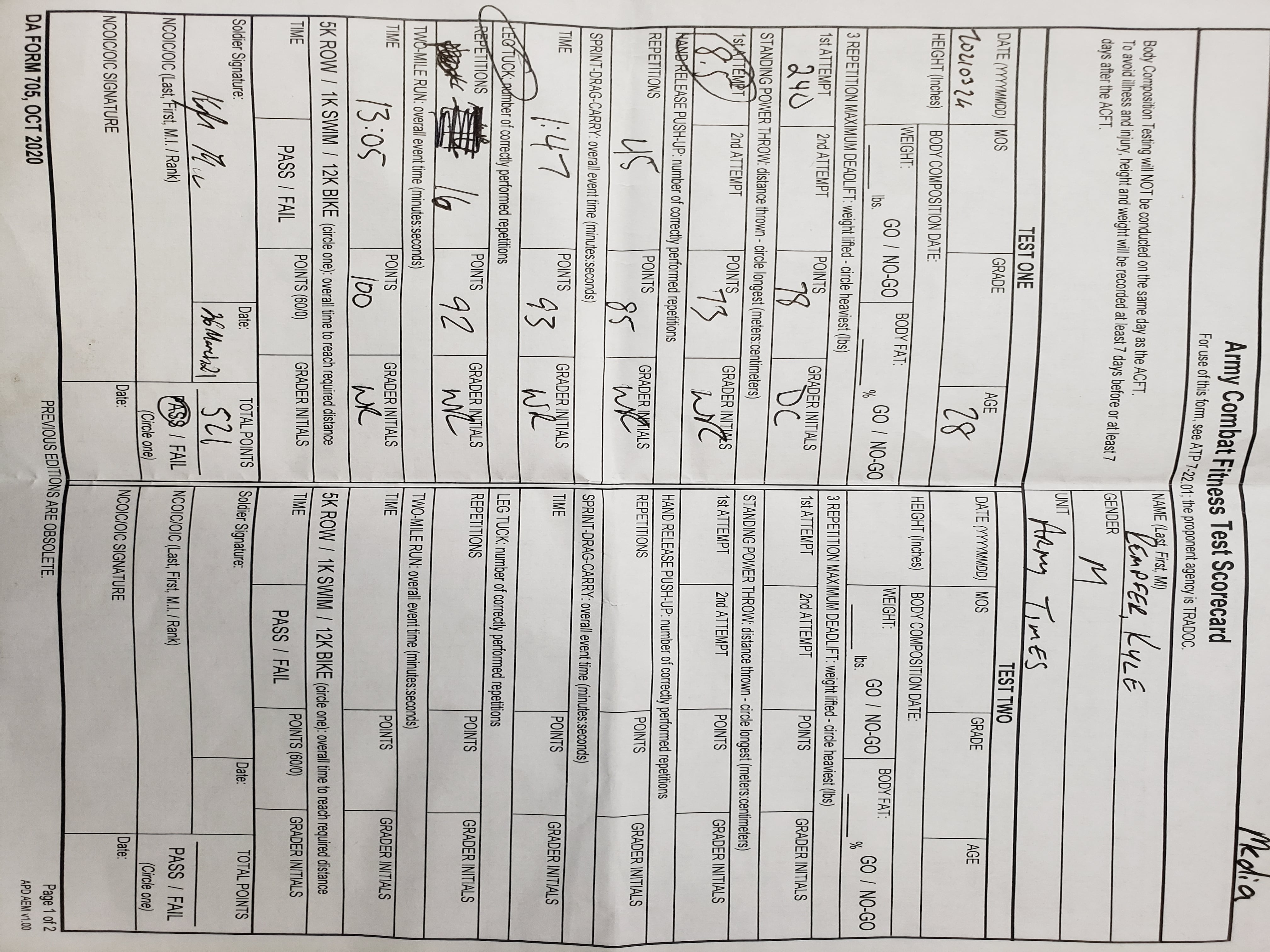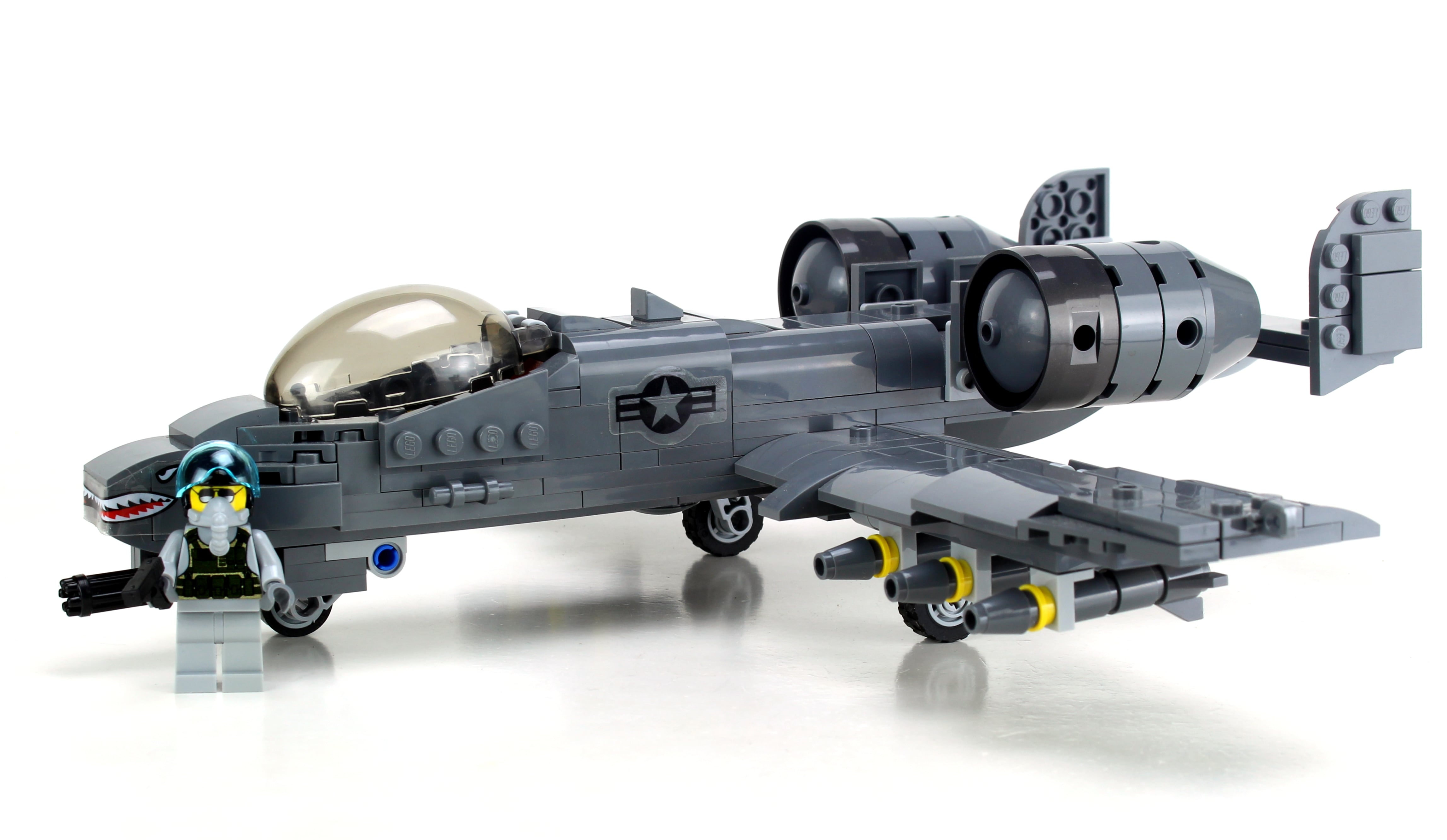The Army is pushing soldiers to take the latest version of its upcoming fitness test this spring — even bringing civilian reporters out to show the test isn’t too intimidating. Service leaders hope to gather enough data by December to inform a Rand Corp. study mandated by Congress.
The Army Combat Fitness Test has gone through several iterations, but the current version goes into effect April 1. This third version of the ACFT removes job-specific standards and separates scores by gender after a soldier meets a gender-neutral baseline to be in the Army.
Don’t worry, though, scores still don’t count against soldiers until April 2022.
Army Times and other Washington, D.C.-based reporters were invited to take the test Friday morning at Joint Base Myer-Henderson Hall along with Sergeant Major of the Army Michael Grinston and Army Vice Chief of Staff Joseph Martin.
Here are a few observations:
- I scored a 521 out of 600 possible points. The hardest event for me, or at least most awkward, was the standing power throw. The leg tucks weren’t too bad. Granted, I do a lot of pull-ups in my home office.
- The ACFT is more challenging than typical military fitness tests, which usually only measure run times, push-ups and sit-ups. Running through multiple exercises that target leg muscles make each successive event more challenging than they would be if tested in isolation.
- The sprint-drag-carry, for instance, left my leg muscles still quaking by the time I had to perform the 2-mile run. I followed the advice of one soldier and ate orange slices in between events. If it didn’t outright help with my glucose levels, or something like that, it added a nice placebo effect.
- The ACFT is far more complicated and time consuming than the military fitness tests I’m used to, which can be done with a stop-watch, an ad-hoc track and a cheap repetition counter. The equipment was pre-staged for the roughly two dozen people taking the test Friday, but it’s easy to see how the ACFT could become a much more involved event for larger groups.
- Hand-release push-ups are noticeably more difficult than normal push-ups that only break the 90-degree angle. But hand-release push-ups also feel like a far better calisthenic that forces me to perform a wider range of motion and eliminates any acceleration I may have built up from repetitions done in quick succession.
- It’s not a good idea to take the ACFT “cold,” as I did. Many of the events are difficult to run through if you’ve only watched a video of the movements. My sprint-drag-carry time would probably benefit from practicing in advance, as long as the equipment is available. My first standing power throw was pretty embarrassing, and I think lacked the “power” part.
Martin, the Army’s vice chief, echoed the sentiment that taking the test is one of the best ways to prepare. Each of the soldiers Martin tested with Friday “said something to the effect of ‘I learned a lot about how I should change my PT program,’” he told reporters.
“There are important techniques to learn, like developing your new cadence on the Hand Release Push-Ups or understanding how your body recovers between events,” Martin added. “Knowing how to prepare yourself to excel in each event in sequence is something you can only learn by taking the test.”

With practice, the ACFT’s baseline requirements appear to be fairly achievable, but Rand researchers want to see more data. That’s why Army leaders want soldiers to go and log scores this spring and coming fall.
The data being cataloged will allow Rand researchers to know where the test was taken, the ages and genders of those who took it, and the weather at the time it was taken.
“I need [soldiers] to take the test so that we can see if we need to make more adjustments,” Grinston told reporters after taking the ACFT Friday morning. “The more data, the easier it is to say, ‘hey we’re trending in the right direction.’”
“Five years from now,” Grinston added, “people will go, ‘I can’t believe we didn’t always do this” test.
The Rand report was mandated by lawmakers in the 2021 defense budget bill. A provision halted the ACFT pending an independent study to determine whether it would hurt recruitment and retention in critical jobs.
That provision came after Sens. Kirsten Gillibrand, D-N.Y., and Richard Blumenthal, D-Conn., raised concerns in October about Army data showing “a consistent” 65 percent failure rate for women and 10 percent failure rate for men. The letter cited a University of Iowa study that showed eliminating the leg-tuck would significantly reduce failure rates.
The third version of the ACFT doesn’t eliminate the leg tuck, but it does give soldiers the option of performing a roughly 2-minute plank instead. The third version also lifted job-specific standards for soldiers, meaning everyone just has to meet a gender- and age-neutral baseline.
Those baseline scores are: three deadlift repetitions at 140 pounds; a 4.5-meter standing power throw; 10 hand-release push-ups; a 3-minute sprint-drag-carry; one leg tuck or a roughly 2-minute plank; and a two-mile run in under 21 minutes.
A minimum passing score is 60 points in each of the six events for a total of 360 points. Above that threshold, though, men and women’s scores are separated into percentiles, so women’s scores would be measured against other women, and the same for men.
Congress was given an official written notice last week about the changes to the test, but Grinston said Monday his office had been in touch with lawmakers before that, as well.
“They were informed so they wouldn’t be surprised by this. It’s been received very well,” Grinston added. “We’re moving in the right direction.”
Kyle Rempfer was an editor and reporter who has covered combat operations, criminal cases, foreign military assistance and training accidents. Before entering journalism, Kyle served in U.S. Air Force Special Tactics and deployed in 2014 to Paktika Province, Afghanistan, and Baghdad, Iraq.
Tags:
Sergeant Major of the Army Michael GrinstonArmy ACFTArmy Combat Fitness TestArmy leg tuckArmy plank fitnessArmy core strengthArmy functional fitnessIn Other News















